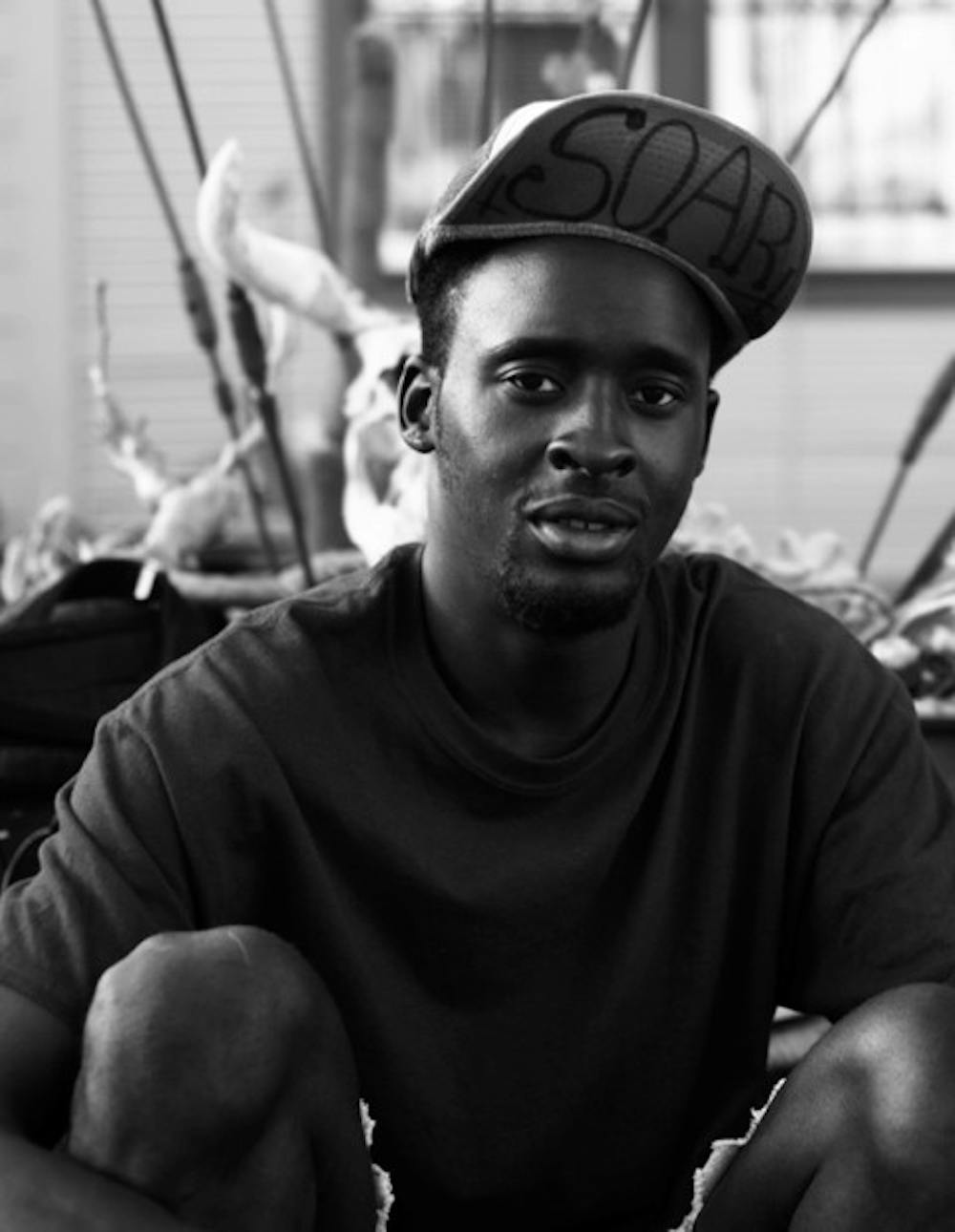Erlin A. Geffrard, also known as the Kreyola Kid, is a multimedia and hip-hop artist whose work often deals with racism, diversity, sexuality and environmental issues. He will be performing and displaying his visual art along with a multimedia installation today at 7 p.m. at Smash Studios on Franklin Street.
Staff writer Mary Feddeman spoke with Geffrard about his inspiration for his art and music, the relationship between hip-hop and activism and what audiences can expect from his show.
Daily Tar Heel: When did you start making art?
Erlin Geffrard: I come from a lot of people who did a lot of indigenous African art and spiritual work.
Religiously my parents would say that they are Baptist and Catholic, but our Haitian heritage was always very apparent in the household when I was growing up. I grew up around a lot of tropical colors, and I was just blown away by them.
When I started elementary school, I remember the first day of kindergarten when my dad walked me in there, and I felt stranded and super scared. I remember all the kids ran and got all the toys, and the only thing that was left in the play bin was this crayon.
So every time it was playtime for us, I was just drawing. I made it so that crayons were the cool thing, I guess. For me, anyway.
DTH: How did music come into play in your work?
EG: I always grew up with my mom singing and we went to church every Sunday. It was mandatory that you’d be in a kids’ choir at the church.
I always grew up with these great drum patterns in my house and just hearing music all around me, so when it came time to create work, I thought it would be interesting to add some kind of musical element to the conventional fine art that I was making.
DTH: Where do find inspiration for your art?
EG: The shifting dynamic of this country right now, in the sense of socio-economic status and race, have shaped the way I view the world.
I recently just got stopped and frisked — just for being black. And I did everything in my power to stop it. I asked the officer, “Am I being detained?” He didn’t reply. Then I asked him, “Am I free to go?” He didn’t reply. And I repeated this on and off for at least 5 or 6 minutes. He finally put his hand on his gun and started screaming at me, saying, “Put your hands on your head!” And I’m thinking, “I’m on my way to help someone edit a video, and I’m about to get shot for no reason.”
So with respect to race, that’s a piece of my everyday life, and it influences what I do. My inspiration also comes from Egyptology. I’m really into ancient Mayan, Aztec, far Asian and Indian artwork — anything from before Western art, because I’ve been in the art institution for so long that I’ve kind of been hit over the head with it.
And as a working class artist in America and as a student, there’s so much on my plate. This is the discourse I’m having with myself and the art institution because
I’m not in the same art world that a lot of these privileged, young artists. I’m living in
a different world.
DTH: What do you think is the relationship between hip-hop and activism, especially
with respect to your work?
EG: The relationship has always been around, and I’m very much following in the footsteps of people who have done it before me. I think that it’s really cool to be able to play with hip-hop — the good and the bad of hip-hop — to push a message forward.
And at the end of the day, I’m not trying to save the world. This scientist came to one of my classes one day and said something like “I’m not trying to save the world; I am saving the world.” I think it’s something like that.
The way we look at the world as individuals is that your world is yours and my world is mine. Saving your world could literally be as much as finally doing the laundry or something. But that might save your personal world. If we all literally saved our own personal world and just did what we know is right, little by little, I think that the world would become a completely different place.
DTH: Why did you choose to come to Chapel Hill??
EG: So many great people have gone there. I’m really excited to have the opportunity to come to Chapel Hill, and I think it will take me out of my comfort zone.
Also, if I’m invited to open my mouth and say something, I’m always going to say it.
DTH: What can an audience expect from your show?
EG: Expect everything and nothing, and hopefully I’ll hit somewhere in between.
It’ll be the world premier of my new video, which is sort of a social commentary on the arts institution in relation to racial and socio-economic dynamics of working class artists. It’s called “Dope Boys with the Dope Art.”
And some of it is about the prison industrial complex, as well.
DTH: What do you hope those who come to see you at Smash Studio will get out of
the experience?
EG: Back in the day, I’d say, “I want everybody to just be happy.” But now, I think evolution is subtle. As long as the audience is looking within themselves and can feel something resonate or change within them, I feel like I’ve done my part.
I like to use the flying squirrel as an example. There were generations of squirrels that just wanted to leap, and over time, the squirrel evolved to have a little flap of extra skin that helped it glide in the air. And that’s through generations of just making a jump.
That’s what I hope my presentation and my show will do. I hope it makes someone want to jump a little.
To get the day's news and headlines in your inbox each morning, sign up for our email newsletters.





